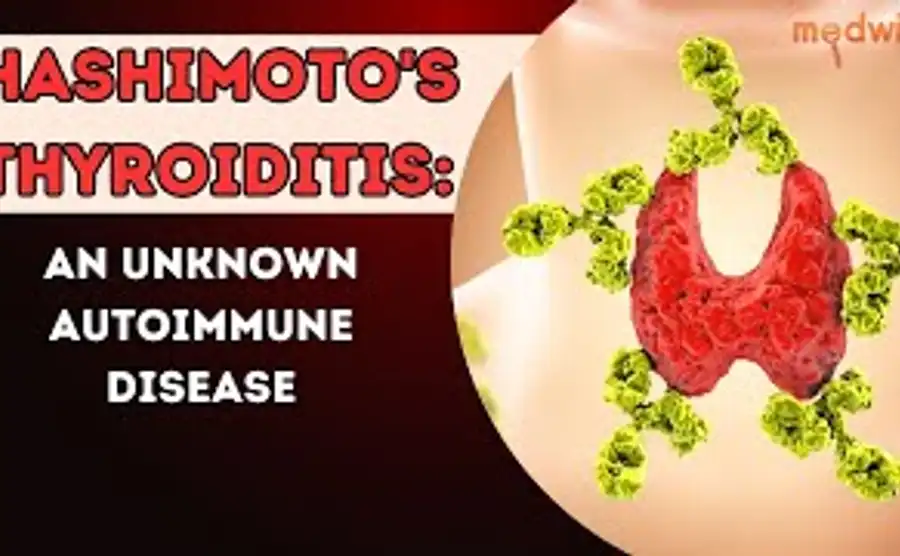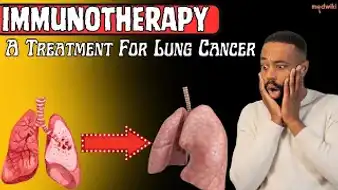Respiratory Health: Castor Oil for Chest Congestion and Asthma
CASTOR OIL IN CONGESTION AND ASTHMAHave you ever used that thick-sticky oil for your hair that has been all the rage on the internet?Even if you haven’t, you might have used castor oil for respiratory issues, constipation or as a skin remedy.If your answer is still ‘no’, go check your hair care and skin care products, you can even find the list of constituents of your soap.But do you know, castor oil is also effective indealing withchest congestion or asthma.What is castor oil and how is it beneficial in asthma?It is a yellow, odorless, viscous oil that has analgesic and anti-inflammatory properties, which offers multiple health benefits like wound healing, moisturization, laxative property, hair growth and respiratory health.Castor oil can be highly beneficial for individuals dealing with chest congestion or asthma. It breaks up mucus in the respiratory pathway, easing symptoms associated with asthma.Suggested Read: Top Health Benefits Of Castor OilHow to use castor oil for asthma?Warm up castor oil and apply it directly to the chest area.Add a few drops of castor oil to a diffuser or humidifier for respiratory relief.Suggested Read: How To Use Castor Oil For Health IssuesMore about castor oil:Castor oilhas been an important part of natural remedies for centuries. The history of castor oil dates to ancient Egypt where it is believed to be used as a fuel. It was often used for inducing labor during pregnancy and facilitating delivery back then.Today, the use of castor oil has been multiplied many fold. It is now being used widely in skin care products for its skin healing properties. It is often used as a laxative, thereby helping to relieve constipation. Soaking dentures in castor oil aids cleaning of them and offers antibacterial benefits. It is also used to reduce pain as it contains anti-inflammatory properties.Suggested Read: 5 Benefits Of Castor Oil For Face And Skin
Hashimoto's Thyroiditis: An Unknown Autoimmune Disease.
Let’s understand the Thyroid GlandThe thyroid is a small butterfly-shaped gland that is present in the front portion of the neck. In people who suffer from Hashimoto's disease, the immune system in their body starts producing such antibodies which start attacking the thyroid gland and abnormally disturb its normal functioning and secretions. Due to this; the thyroid gland seems to be damaged and not able to produce enough thyroid. Thyroid hormone is crucial because it controls the energy consumption in our body which ultimately affects almost all the organs in the body.Nature of Hashimoto's Thyroiditis:The chronic autoimmune disorder affects the thyroid gland, which is which regulates metabolism and growth. Hypothyroidism due to this disease is very common but some rare cases have also been seen in which the thyroid becomes overactive due to Hashimoto's disease i.e. hyperthyroidism has been reported.Suggested Read:https://medwiki.co.in/post/low-and-high-thyroid-problems-in-women-enImmune System Attack:The immune system mistakenly targets the thyroid, causing inflammation and damage to the gland.What are the key stages in the progression of Hashimoto's Thyroiditis, and how does the immune system's response contribute to the inflammation and damage to the thyroid gland?Suggested Read:https://medwiki.co.in/post/what-is-an-autoimmune-disorder-enDisease Progression Stages:First Stage:Increased production of Th1 cytokines activates macrophages and cytotoxic T cells attacking the thyroid gland.Second Stage:Increased production of Th2 cytokines activates B cells, leading to antibody production against the thyroid.Final Stage:Thyroid gland destruction occurs, resulting in hypothyroidism and reduced thyroid hormone production.Symptoms and Impact:Hashimoto's Thyroiditis manifests with symptoms such as fatigue, weight gain, depression, and joint pain.It is more prevalent in women, often developing in middle age.Suggested Read:https://medwiki.co.in/post/best-thyroid-diet-for-weight-loss-enContributing Factors:Development is linked to factors like a family history of autoimmune disease, exposure to environmental toxins, and iodine deficiency.Diagnosis and Treatment:Diagnosis involves identifying symptoms and specific antibodies in blood tests.Treatment typically includes hormone replacement therapy to address missing thyroid hormones and alleviate symptoms.Suggested Read:https://medwiki.co.in/post/6-foods-you-should-never-eat-in-thyroid-enWho is more likely to have Hashimoto’s disease?Many studies have found that Hashimoto’s disease is 4-10 times more common in women than men. So this disease can occur at any age but still, a common age range is30-50. The highest chances of developing Hashimoto's disease occur if there is a family history of the disease. Hashimoto’s autoimmune disease can also develop if you already suffer from one of these 4 autoimmune disorders:Celiac disease: a digestive disorder that damages the small intestineLupus: a chronic, or long-term, disorder that can affect many parts of the bodyRheumatoid arthritis: a disorder that affects the jointsSjögren’s syndrome: a disease that causes dry eyes and mouthSupplemental Point: Type 1 diabetes: is a disease that occurs when your blood glucose, also called blood sugar, is too high. It may also induce chances to develop Hashimoto’s autoimmune disease.Note: Hashimoto’s disease is also called Hashimoto’s thyroiditis, chronic lymphocytic thyroiditis, or autoimmune thyroiditis.Conclusion:Hashimoto’s disease, also known as Hashimoto’s thyroiditis, is a chronic autoimmune disorder that affects the thyroid gland which is crucial for metabolism and growth. In this condition, the immune system mistakenly targets the thyroid gland and causes damage and inflammation to the thyroid; due to which the patient has to suffer from hyperthyroidism. Weight gain, depression, and fatigue are a few symptoms of this disease and it generally affects the age group of 30-50 years.Some contributing factors to this disease are environmental toxins, family history, and iodine deficiency. It is diagnosed by detecting antibodies in a blood test and monitoring the symptoms. Hashimoto’s disease can also cause thyroid overactivity which is a rare condition. For effective management of this disease, it is necessary to understand how this disease occurs so regular studies continue in medical science to understand different diseases and introduce effective treatments.Disclaimer:- This information is intended to supplement, not substitute, advice from your healthcare provider or doctor. It does not cover all possible uses, precautions, interactions, or side effects, and may not be appropriate for your specific healthcare needs. Always consult with your doctor or another qualified healthcare provider before modifying or discontinuing any prescribed portion of your healthcare plan or treatment, in order to determine the best course of therapy for you. Do not ignore or delay professional medical advice based on anything you have seen or read on Medwiki.Find us at:https://www.instagram.com/medwiki_/?h...https://twitter.com/medwiki_inchttps://www.facebook.com/medwiki.co.in/
The Renal Powerhouse: How the Kidneys Regulate Blood Pressure
What role does the renin-angiotensin-aldosterone system (RAAS) play in the kidney's regulation of blood pressure?The role are :-Low Blood Pressure Response:Kidneys release the enzyme renin when blood pressure is too low.Renin triggers chemical reactions leading to blood vessel constriction and fluid retention.This action increases blood volume and pressure, restoring healthy levels.High Blood Pressure Response:Kidneys increase urine production to remove excess fluid, lowering blood volume and pressure.Renin-Angiotensin-Aldosterone System (RAAS):Activated when blood pressure drops, regulating blood pressure.Renin stimulates the production of angiotensin I.Angiotensin I is converted to angiotensin II, a potent vasoconstrictor.Angiotensin II stimulates aldosterone production, promoting sodium and water retention in the kidneys.This process increases blood volume and pressure.Disclaimer:- This information is intended to supplement, not substitute, advice from your healthcare provider or doctor. It does not cover all possible uses, precautions, interactions, or side effects, and may not be appropriate for your specific healthcare needs. Always consult with your doctor or another qualified healthcare provider before modifying or discontinuing any prescribed portion of your healthcare plan or treatment, in order to determine the best course of therapy for you. Do not ignore or delay professional medical advice based on anything you have seen or read on Medwiki.Find us at:https://www.instagram.com/medwiki_/?h...https://twitter.com/medwiki_inchttps://www.facebook.com/medwiki.co.in/
Immunotherapy: A Treatment For Lung Cancer
Have you heard about immunotherapy, a promising approach to fighting cancer?This innovative treatment works with your body's immune system to fight cancer. Immune checkpoint inhibitors are a type of immunotherapy that block a protein interaction between immune and cancer cells, ultimately reducing the immune response to cancer.You may be wondering how cancer cells can evade the immune system. Well, cancer cells have ways to avoid destruction by the immune system, such as genetic changes that make them less visible to the immune system, proteins on their surface that turn off immune cells, or even changing the normal cells around the tumor so they interfere with how the immune system responds to the cancer cells.The goal of immunotherapy is to help the immune system to better act against cancer. Researchers have found that some patients with high levels of an immune checkpoint protein called PD-L1 may be more responsive to immune checkpoint inhibitors. Another marker for immunotherapy response is tumor mutational burden (TMB), which refers to the amount of mutations in the cancer cell DNA.Tumor-infiltrating lymphocytes (TILs) are immune cells that are sometimes found in and around tumors. These cells are a sign that the immune system is responding to the tumor, and people whose tumors contain TILs often do better than people whose tumors don’t contain them.Several immune checkpoint inhibitors have been approved for advanced lung cancer, including pembrolizumab, atezolizumab, cemiplimab, durvalumab, and nivolumab. However, deciding which patients are most likely to benefit from immunotherapies remains a challenge.Source:- https://www.cancer.gov/about-cancer/treatment/types/immunotherapy https://www.cancer.gov/types/lung/research#:~:text=Lung Cancer Research Results,-The following are&text=Enhertu Marks First Targeted Therapy,in People with Lung CancerDisclaimer:- This information is intended to supplement, not substitute, advice from your healthcare provider or doctor. It does not cover all possible uses, precautions, interactions, or side effects, and may not be appropriate for your specific healthcare needs. Always consult with your doctor or another qualified healthcare provider before modifying or discontinuing any prescribed portion of your healthcare plan or treatment, in order to determine the best course of therapy for you. Do not ignore or delay professional medical advice based on anything you have seen or read on Medwiki.Find us at:https://www.instagram.com/medwiki_/?h...https://twitter.com/medwiki_inchttps://www.facebook.com/medwiki.co.in/
Sip Your Coffee Without Damaging Your Lungs!
“Can coffee be harmful for your lungs?” Possibly yes!“Can you breathe better after consumption of coffee?” A yes is a possibility again.Coffee contains lots of Caffeine, which works similar to theophylline (a drug used to treat asthma). It widens air passages in the lungs, aiding breathing for asthma patients. But consuming caffeine in the right way is crucial to avoid worsening of respiratory complications.Effects of consuming excessive coffee (caffeine):Caffeine has a drying effect on the mouth, excessive coffee consumption of it can cause cough. Some individuals may even experience symptoms like mucus production, diarrhea, nausea, vomiting, stomach cramps, and hives with coffee consumption.Drinking too much coffee can lead to gastric acid, weaken the esophageal sphincter, and result in gastroesophageal reflux disease (GERD).It may also contribute to breathlessness, coughing, and excess mucus.Suggested Read: Tea Vs Coffee?What is the right quantity of caffeine consumption in a day?Recommended caffeine limits for optimum effectiveness are:Adults: Up to 400 mg caffeine daily (equivalent to four cups of filter coffee).Pregnant or breastfeeding individuals: Limit to 200 mg caffeine daily.Teenagers: Restrict caffeine intake to 100 mg per day.Suggested Read: Why Morning Coffee Is Actually Making You More Constipated?Hot Coffee vs. Iced Coffee:Yes, even the preparation of your coffee determines its effect on your respiratory health. Hot coffee contains more antioxidants, provides warmth to the throat, and enhances blood circulation. While iced coffee may tighten nasal mucosa, potentially fostering respiratory infections.So next time you’re hanging out with friends in a pretty café, choose hot coffee over the classic iced coffee to not regret it later.Suggested Read: Want To Keep Your Hips Strong? Drink Tea/Coffee!
Anal Fissures: Causes, Symptoms & Relief!
What lifestyle changes or preventive measures do you think could be effective in reducing the risk of developing anal fissures, especially for individuals prone to chronic constipation or diarrhea?Reducing the Anal Fissures:Cause and Culprits:Anal fissures result from small tears in the anal canal lining, triggered by the passage of large, hard, or bulky stools.Common in individuals with chronic constipation or diarrhea.Formation Process:Trauma to the anal canal initiates fissure formation, causing damage to delicate anal tissues.Increased blood flow and swelling hinder proper healing, leading to recurring pain during bowel movements.Recognizing Symptoms:Symptoms include burning or cutting pain during and after bowel movements.Bright red blood on stool or toilet paper, anal itching, and spasms of the anal sphincter may also occur.Treatment Approaches:Lifestyle adjustments: High-fiber diet, stool softeners, and sitz baths to soften stools and relax the anal sphincter.Topical ointments with numbing agents or healing medications.Surgical options in severe cases: Lateral internal sphincterotomy (LIS) or advancement flap surgery.Consulting a Professional:Effective treatment and prevention strategies can be personalized with the guidance of a healthcare professional.Disclaimer:- This information is intended to supplement, not substitute, advice from your healthcare provider or doctor. It does not cover all possible uses, precautions, interactions, or side effects, and may not be appropriate for your specific healthcare needs. Always consult with your doctor or another qualified healthcare provider before modifying or discontinuing any prescribed portion of your healthcare plan or treatment, in order to determine the best course of therapy for you. Do not ignore or delay professional medical advice based on anything you have seen or read on Medwiki.Find us at:https://www.instagram.com/medwiki_/?h...https://twitter.com/medwiki_inchttps://www.facebook.com/medwiki.co.in/
Dangers of Secondhand Smoke.
Dr. Beauty Gupta
Doctor of Pharmacy
Care for your Lungs!
Mrs. Prerna Trivedi
M.Sc. Nutrition














